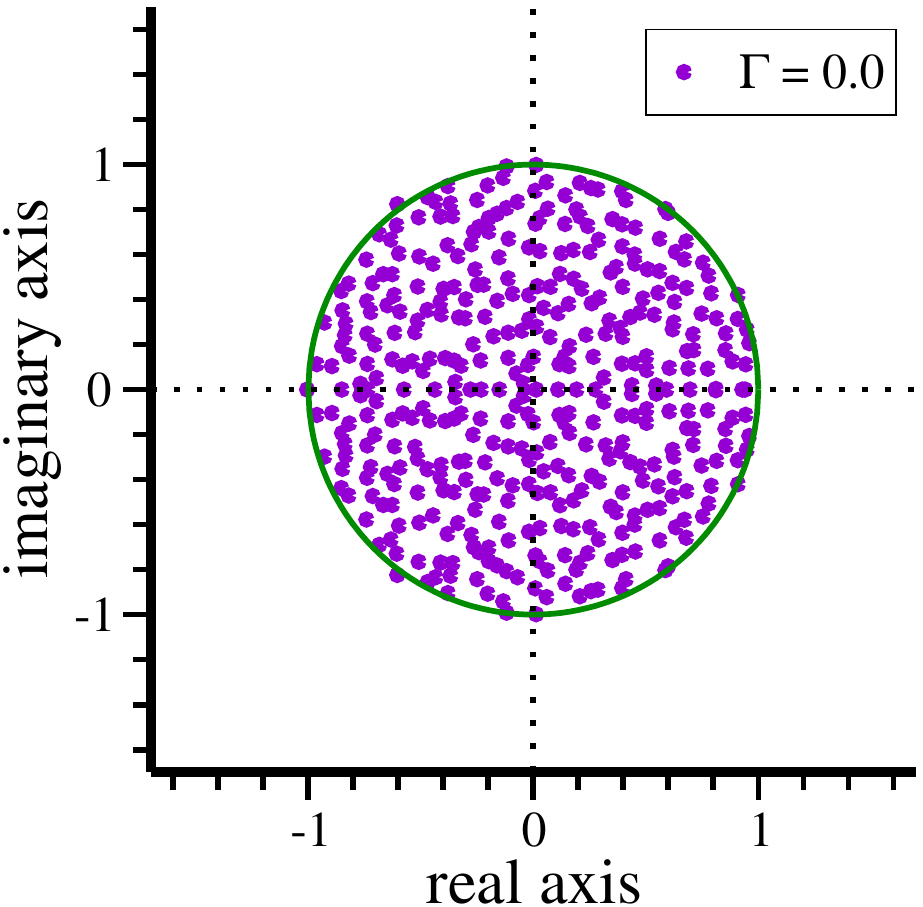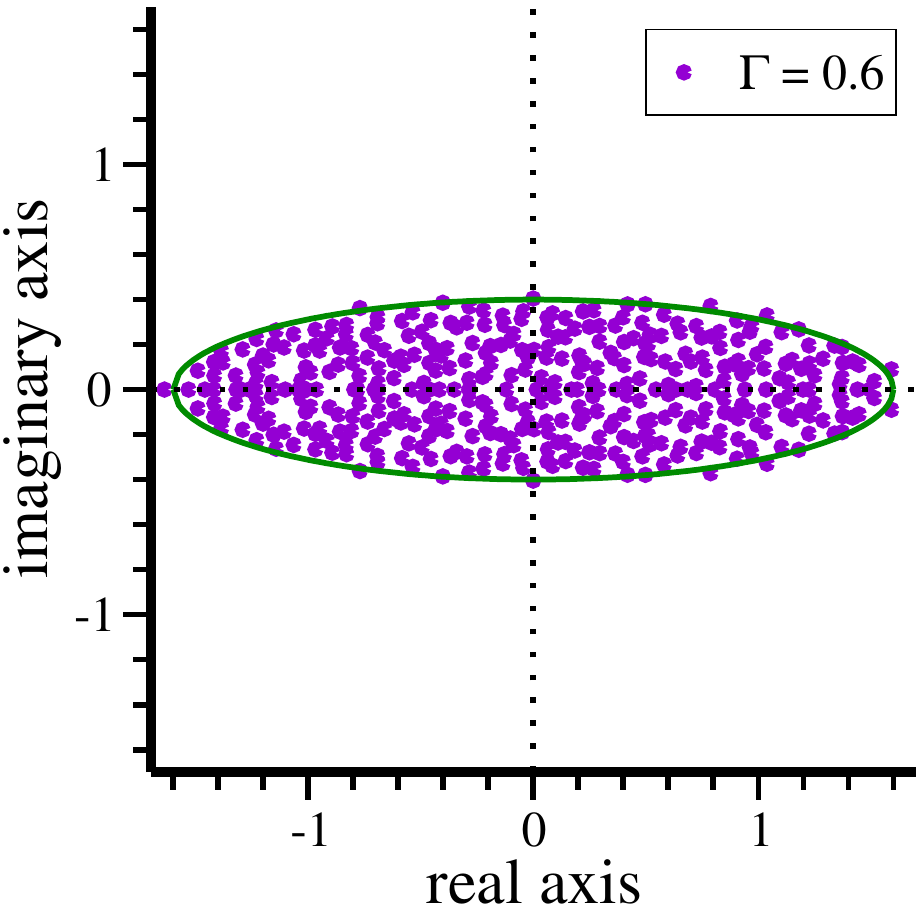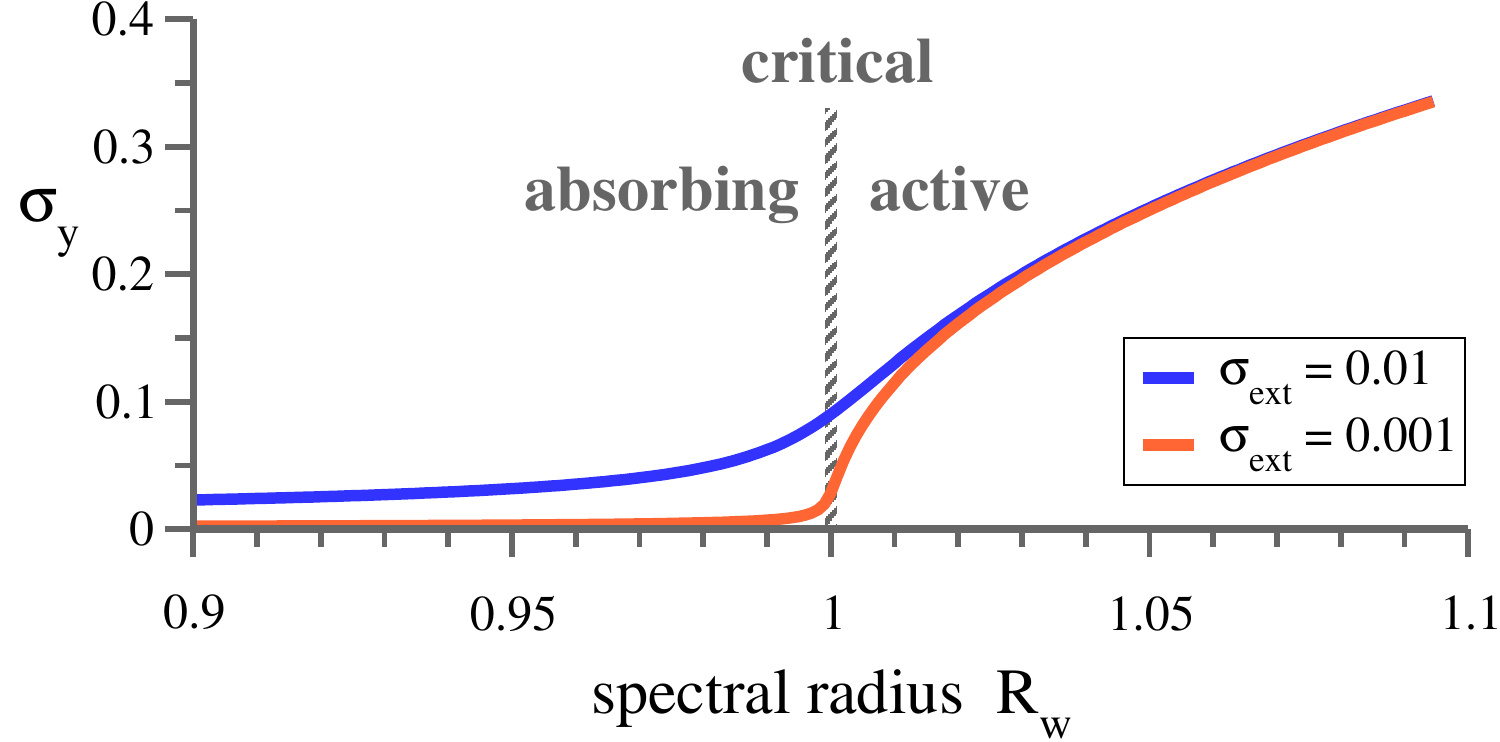#!/usr/bin/env python3
import numpy as np
import torch
import torch.nn as nn
import matplotlib.pyplot as plt
def target_function(n):
"to be reproduced"
series = np.zeros(n)
for i in range(n):
x = i*200.0/n
series[i] = np.sin(x) + np.cos(0.3*(x+np.sin(1.1*x)))
return series
class EchoStateNetwork:
"Echo State Network class"
def __init__(self, input_size, reservoir_size,
output_size, spectral_radius=0.9,
sparsity=0.1):
self.reservoir_size = reservoir_size
self.spectral_radius = spectral_radius
# input weights
self.Win = torch.randn(reservoir_size, input_size)*0.1
# sparse reservoir weights
W = torch.randn(reservoir_size, reservoir_size)
W[torch.rand_like(W) > sparsity] = 0.0
# scaling reservoir weights to set spectral radius
eigenvalues = torch.linalg.eigvals(W).abs()
W *= spectral_radius / eigenvalues.max()
self.W = W
# output weights (initialized later during training)
self.Wout = torch.randn(reservoir_size + 1,
output_size, requires_grad=True)
def forward(self, input_series):
"""running the ESN for the entire input series,
collects the reservoir states"""
states = []
state = torch.zeros(self.reservoir_size)
for u in input_series: # @: matrix multiplication
state = torch.tanh(self.Win@u + self.W@state)
states.append(state)
return torch.stack(states) # list to tensor
def train(self, input_series, target_series,
learning_rate=5e-3, epochs=5000):
""" reservoir weights do not change
--> reservoir states do not change
--> reservoir states can be evoulated
before training
"""
states = self.forward(input_series)
# adding bias
states_with_bias =\
torch.cat([states, torch.ones(states.shape[0], 1)],
dim=1)
# instantiate optimizer / loss function
optimizer = torch.optim.SGD([self.Wout],
lr=learning_rate)
loss_fn = nn.MSELoss()
# optimizing output weight
for epoch in range(epochs):
optimizer.zero_grad()
predictions = states_with_bias@self.Wout
loss = loss_fn(predictions, target_series)
loss.backward()
optimizer.step()
if (epoch+1)%100==0:
print(f'Epoch {epoch+1}/{epochs},', end="")
print(f' Loss {loss.item():9.5f}')
def predict(self, input_series):
states = self.forward(input_series)
states_with_bias = torch.cat([states,
torch.ones(states.shape[0], 1)], dim=1)
return states_with_bias @ self.Wout
# generating time series train/test data
data = target_function(2000)
train_data, test_data = data[:1500], data[1500:]
# preparing input and target series for the ESN
train_input = torch.tensor(train_data[:-1],
dtype=torch.float32).view(-1, 1)
train_target = torch.tensor(train_data[1:],
dtype=torch.float32).view(-1, 1)
test_input = torch.tensor(test_data[:-1],
dtype=torch.float32).view(-1, 1)
test_target = torch.tensor(test_data[1:],
dtype=torch.float32).view(-1, 1)
# initialize and train the ESN
esn = EchoStateNetwork(input_size=1,
reservoir_size=500,
output_size=1)
esn.train(train_input, train_target)
# predictions/performance for test data
predictions = esn.predict(test_input)
mse = nn.MSELoss()(predictions, test_target)
print(f"\nmean squared test error: {mse.item()}")
# plotting results
plt.figure(figsize=(12, 6))
plt.plot(test_target.numpy(), label="true")
plt.plot(predictions.detach().numpy(), label="predicted")
plt.legend()
plt.title("ESN inference")
plt.show()



